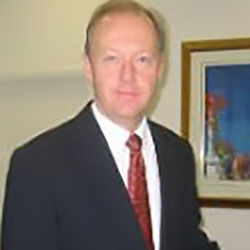


Mr. Keith Hayward

Our company exports about 10% of our production and has seen large year on year growth. The demand for our products such as face masks ,barrier media, air and liquid filters seem to be increasing and more than fully recovered from the recession. Demands include obtaining filters that last longer, have lower pressure drop and at lower cost. This seeming impossible challenge drives process improvement and product development. That said there is considerable conservatism by many users as they validate a product and want nothing to change but seek identical products. Enforced resin changes by global suppliers have caused process change which provides opportunities for users to re evaluate suppliers. This means non woven roll manufacturers like Monadnock non-wovens can loose customers as part of this revalidation but equally enables us to gain acceptance at our competitors who are faced with the same process. We acted pro-actively two years ago developing a validation document that defines the claims of our new media and invites users to challenge our results. This greatly assists in the transition from one resin to another in pharmaceutical or other critical industries.
Our strength and unique proposition is being large enough to ensure consistent and excellent quality yet small enough and flexible enough to meet relatively small orders and to produce relatively quickly.We prefer to sell in truckload quantities but often the filter users require partial truck loads. This makes the speed of transition on 24/7 machinery a key component in cost control. As the volume increases larger more expensive melt blown machines have an edge in cost but for users who buy in single truck quantities per month our machine flexibility and quality are hard to match. An example is that our machines are focused on polypropylene but we constantly consider changing the properties to meet customer demand with additives that affect the flame resistance, color, or even more profound proerties.This is presented to the market as a willingness to offer toll converting or laboratory to commercial scale up trials.
The major challenge to supplying into developing markets is the additional cost of freight and shipping time and the competition from lower cost suppliers in those markets. The same is in reverse in that even low cost importers suffer from long lead times and high freight costs. This particularly true of lofted material or less than container quantities. Usually it is price and a lack of understanding of quality provides a barrier in developing countries. By contrast in the developed world say Europe non tariff barriers can be a battle with increasing environmental laws such as Reach in Europe as a good example.
Filtration is a huge area which has many applications from ASHRAE to liquid filters to vacuum bags and face masks. There are plenty of niche areas to attack and there are not many open high volume markets which make it quite different to say the feminine hygiene market. Also the customer base is diverse and spread out making it very hard to get a critical mass of sales to justify capital investment.
The application of nano fibers to increase surface area, reduce pressure drop and increase dirt holding shows promise as does wider use of additives to achieve opportunities defined by the market.Another area not to be forgotten is the use of recycled or carbon neutral polymers such as PLA. These tend to be more expensive than pure polypropylene but become more viable as crude oil prices increase or polymer is less available.It seems there is little pull from the market in the filter industry for green media where cost and performance remain key. However new solutions continue to be developed and one day a suitable green filter will be developed if it has not already.
We are not active in the Indian market and have been approached to export our technology into India. The challenge among others is finding enough customers of such a dis <
China is an excepted producer of high quality spun bond non wovens which are exported throughout the world and increasingly used by converters who are located next to spun bond mill in China to make value added products for export. They use state of the art machinery and can compete worldwide even with the freight cost. The industry is capital intensive and so the advantage is not labor cost driven. That said the volumes have to be huge to work. New machines being added all over the world allegedly adding 400 million tonnes of production in the next two years illustrate the high growth of the business but also that freight plays a significant part as these mills are added all over the world and not in one location. The mills need to be near their customers and international trade can be a challenge. Melt blown operators are much smaller in size but are again capital intensive.India has some spun bond production which tends to be not cutting edge and therefore has a chance to improve by new investment but with a glut of production coming on line the initial thrust should be to meet the growing domestic market and provide integration with converters to reduce freight costs.
DISCLAIMER: All views and opinions expressed in this column are solely of the interviewee, and they do not reflect in any way the opinion of technicaltextile.net.